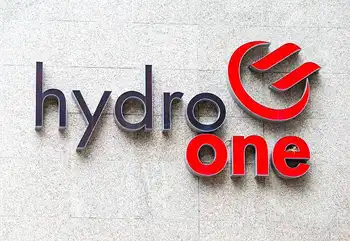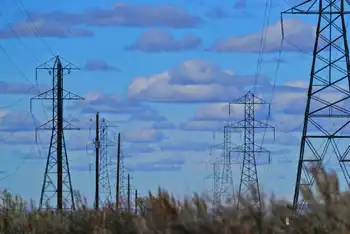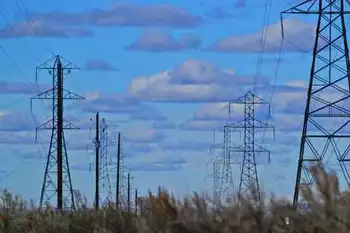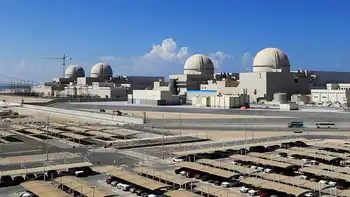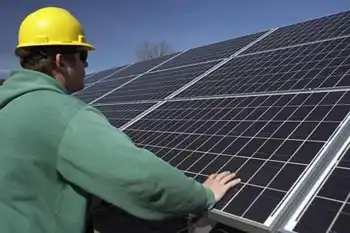Batteries could help fuel solar on the grid
By Investor's Business Daily
Arc Flash Training CSA Z462 - Electrical Safety Essentials
Our customized live online or in‑person group training can be delivered to your staff at your location.

- Live Online
- 6 hours Instructor-led
- Group Training Available
The on-again off-again nature of wind and photovoltaic solar power production makes the energy fed into the grid spiky. It can be a lot of volts one hour but not many the next, when clouds gather or the wind settles.
Things aren't bad now. But as solar and wind gain steam, having too many intermittent producers can make it hard for grid operators to plan for meeting peak power demand. Analysts say the more solar and wind plants start feeding power to the grid, the bigger the potential for problems.
"An emerging pain point to the electric sector is the high penetration of photovoltaic solar power on the distribution grid," said Dan Rastler, an analyst at the Electric Power Research Institute. "We are starting to get concerned with what we're seeing with some cloud-effect issues and voltage swings.
"This could be an operational challenge... as operators like to operate the grid at very tight voltages and frequency requirements."
EPRI is looking at how battery systems, and other kinds of storage, could help. The solar industry sees storage as one technology that must improve as capacity is built out.
U.S. solar and wind energy production capacity reached 32 gigawatts in 2009. The Energy Information Administration forecasts that to more than double by 2020. Most of that capacity is wind, then thermal solar, then photovoltaic solar.
"For solar to be more than just a peak generator we're going to have to have substantial storage," said Rhone Resch, CEO of the Solar Energy Industries Association.
Resch says the industry is seeing many new providers of storage.
"There are utility-scale storage technologies that are commercially available today and innovative new residential products," he said. Those include not only storage "but built-in inverters and software to automatically create smart energy backup for the home."
The same kinds of systems are now being developed for utility-scale solar plants, Resch says.
Some new solar thermal plants — which collect the sun's heat rather than light — will use towers of molten salt for storage. But photovoltaic solar plants — which convert light to electricity — are eyed as candidates for battery systems.
"There are quite a few options and possibilities," Rastler said. "You could have a storage device at the utility distribution substations... you could also have distributed energy storage systems down at the final line transformer... and you can have storage systems co-located at commercial and residential establishments."
Battery systems can come in many forms, Rastler says. EPRI tests some at its smart-grid lab in Knoxville, Tenn. Most recently, it has analyzed lithium-ion batteries, which are keys to hybrid and electric cars.
"We're starting to see a few of these lithium-ion batteries deployed in solar applications," he said. "It's still sort of a niche market because they're still expensive."
Indeed, battery system costs can range from around $500 to $600 per kilowatt hour for sodium sulfur batteries — a commercially mature technology — to between $800 and $1,000 per kWh for lithium-ion batteries, which are still being tested.
Lithium-ion batteries have advantages over some other types. They can store a lot of energy for their size and weight, they can accommodate high voltages, and they're good at holding a charge for a long time.
Rastler says lithium-ion batteries are best suited to short-duration storage, between one and four hours. "We've been looking at lithium-ion for the end-of-line transformer applications," he said. These could store perhaps 25 kilowatts for two hours but would cost "well above" $1,000 a kilowatt hour, a lot more than other types.
Costs need to come down to make such batteries practical. A 25-kW system that could store enough energy to service a neighborhood or big company for two hours would run north of $50,000.
But Rastler said costs will fall " dramatically as lithium-ion vendors start ramping up their capacity."
Several makers of lithium-ion batteries are competing for electric-car business, and could be contenders in power grid battery plans.
Japan's NEC said a month ago that it's working with EPRI on field trials of a power storage system using NEC's lithium-ion battery technology. NEC says it is providing a 25-kW system and it says follow-up electric utility demonstrations of larger 1-megawatt systems are possible as part of an EPRI-U.S. electric utility industry research collaborative.
NEC aims to cultivate its smart- grid business.
"We are seeking to make important advances in the cost reduction and optimization of energy management," Takemitsu Kunio, an NEC senior vice president, said in the announcement. "We also leveraged these same technologies to start our automobile battery business."
But there's plenty of competition in the electric-car battery niche. Players include Primearth EV Energy Co., a joint venture between Panasonic and Toyota A123 Systems Johnson Controls LG Chem's Compact Power and Ener1.
Batteries aren't the only alternative-power storage devices under consideration.
"In terms of storage for solar energy, we have a division looking at hydrogen fuel cell storage," said Jayesh Goyal, vice president of North American sales at Areva Solar, a unit of French power company Areva.
As innovation in storage systems continues, cutting costs will be key to wider use.
"There's still a big gap between the amount of money it takes to implement a storage solution and what the market will give you for storage," Goyal said.





